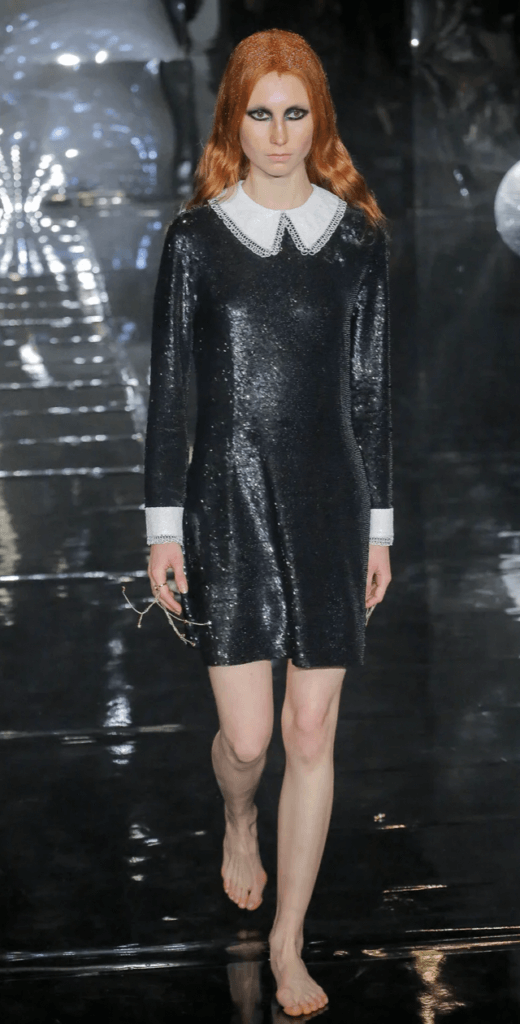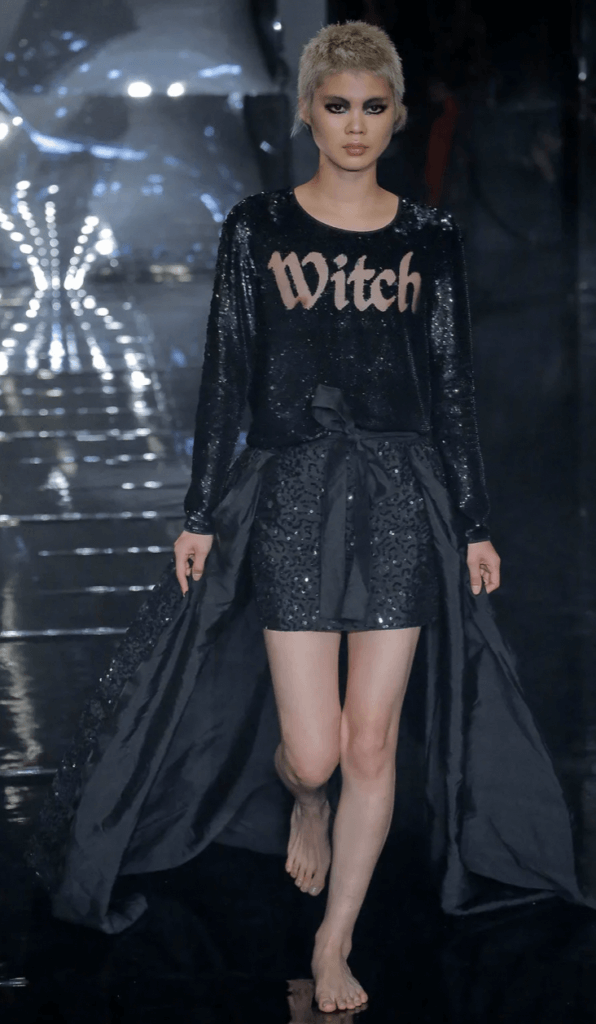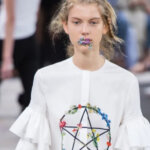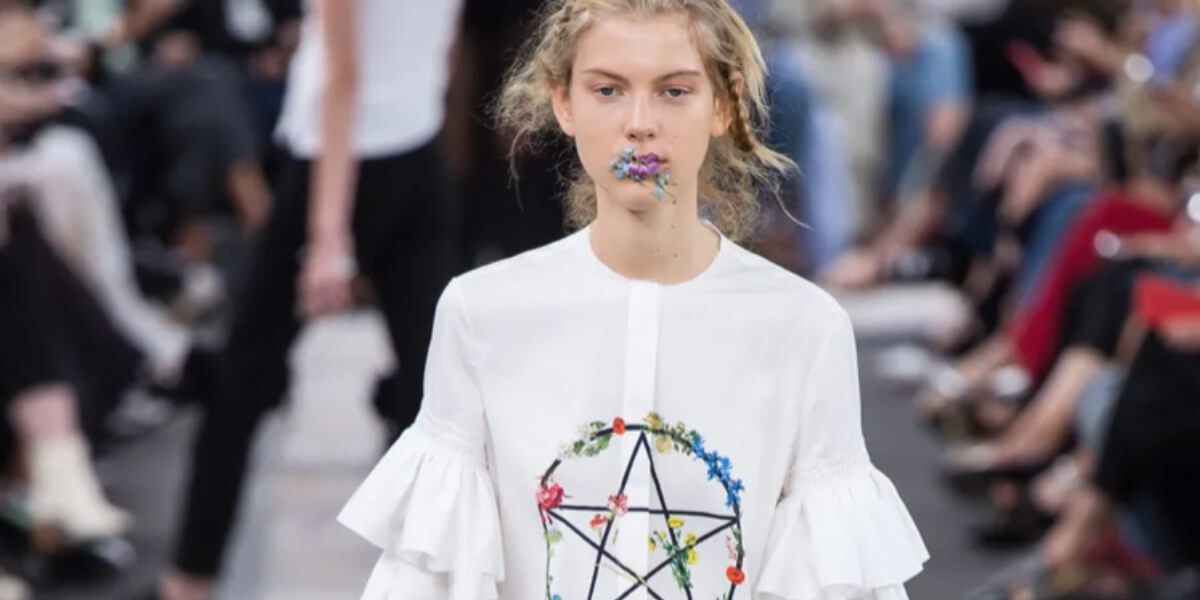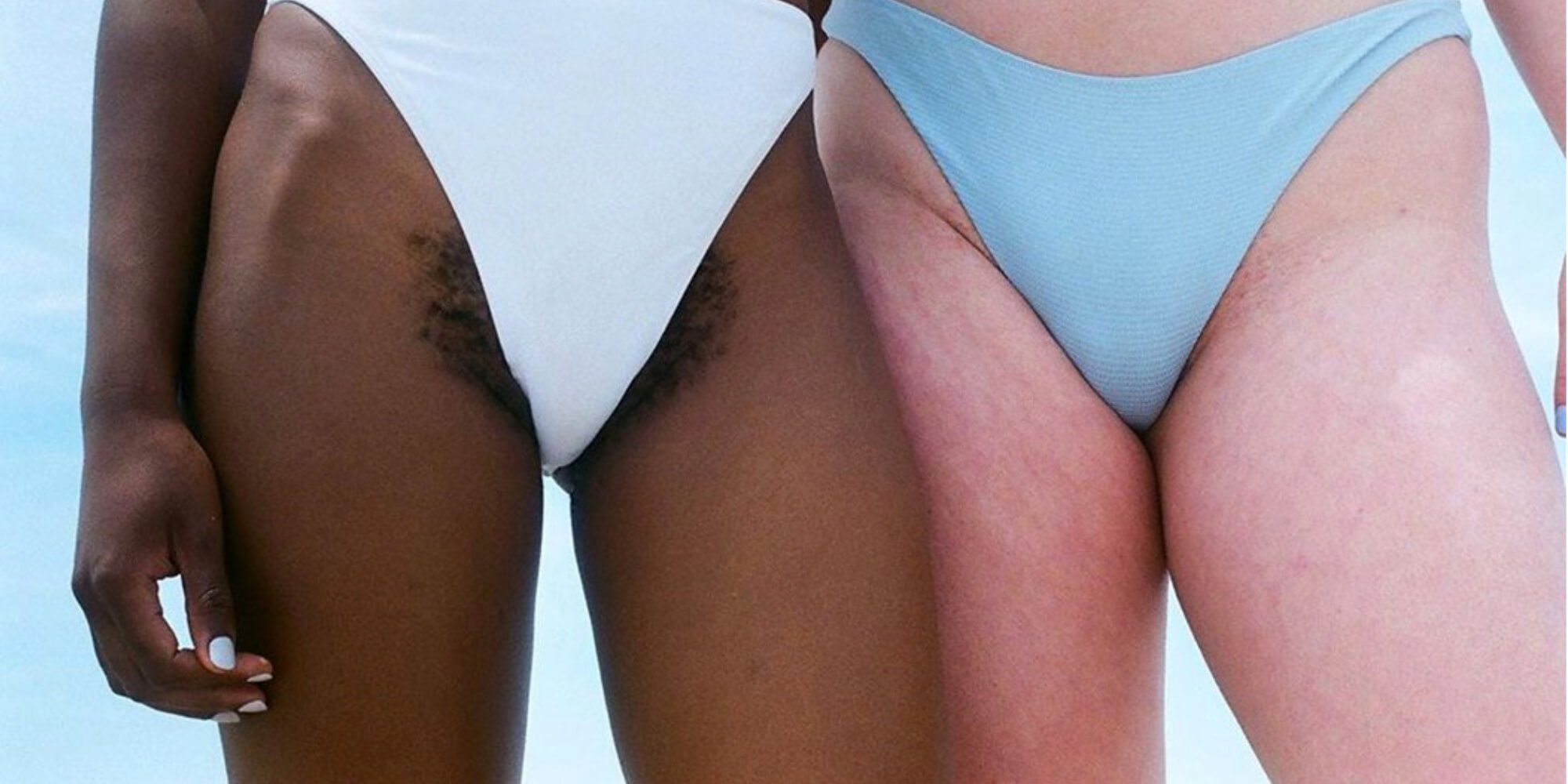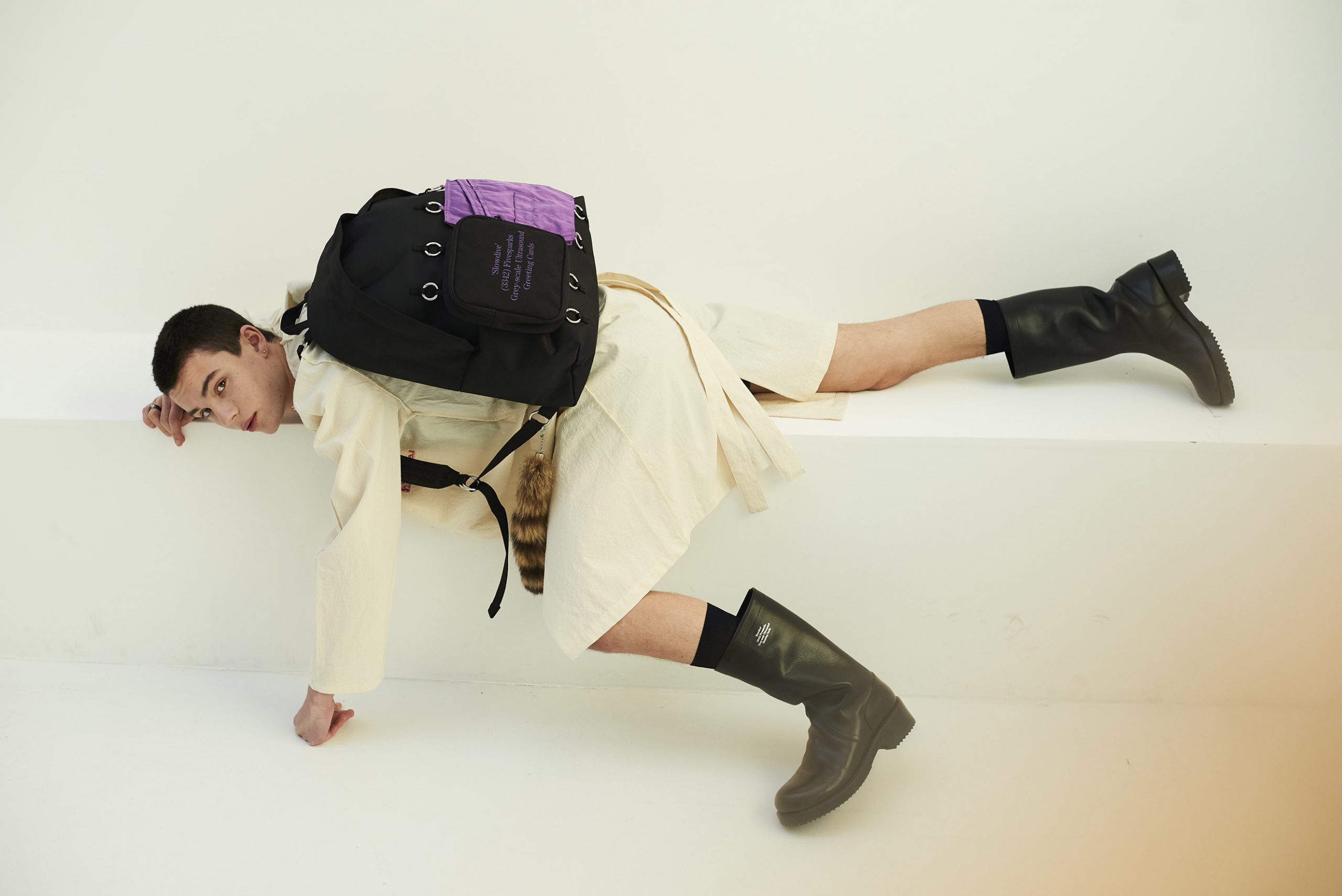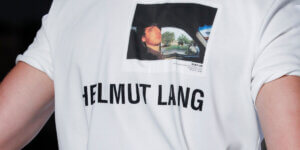Gen Z has so little faith in governments, that 56% of them are sure that humanity is doomed, according to a multi-national youth study. This sentiment is part of a broader trend of institutional skepticism affecting all sectors, from the education system to the supreme court. This loss of faith in authority and the establishment has the “doomer” generation re-defining their values and re-building their identity.
Some are calling this the era of radical self-creation, a process in which self-desire has been elevated as the primary source of authority. As we move away from the previously governing hyper-rational world and actively seek experiences that bring joy and happiness (the so called, Villain Era), we are experiencing a modern re-enchantment. Individuals are seeking magical experiences that lets them escape the mundane (76%, Wunderman Thompson). This, in contrast with the rise of algorithmically supercharged moral panics, has ghoulish behavior trending.
The aesthetics of occultism are rising once again, as hedonistic nihilism has the zeitgeist gravitating towards freedom and irreverence.
In beauty, individuals reject pre-established standards, morphing their faces and hair to appease their own gaze. In music, artists use supernatural imagery as a symbol of liberation and rebellion, whether against politicians or their disapproving fans. In film, sympathetic depictions of vampires and monsters have become perfect reflections of an age in which being different can mean being demonised.
As we delve deeper into this transformative era of self-expression and unconventional ideologies, the resurgence of occult aesthetics evokes a sense of enchantment that leads to a profound rediscovery of our inner selves.
As we challenge traditional notions of attractiveness, we’re embracing unique, boundary-pushing styles. This has given rise to beauty trends such as #UglyBeauty and #ManRepeller on platforms such as TikTok, which promote gender-neutral ideals, emphasise a move away from the male gaze and embrace individuality. Brands are taking note of this shift; Fenty’s collaboration with @UGLYWORLDWIDE aims to capture the model’s experimental approach to makeup, highlighting that beauty today isn’t about standardising everyone’s look; it’s about making people feel.
Further Dark mysticism is beginning to take over advertising as emotions such as fear, dystopia and the uncanny capture our sense of wonder. In particular, campaigns such as State Farm x Haunted Mansion, Heaven x M3GAN, Marc Jacobs taking Inspo from Donny Darko and Ambush x Nike have extended the allure of spookiness beyond the Halloween season, demonstrating that our fascination with the eerie and mysterious is year-round.
And although Halloween provides us with an excuse to raid the pound shops in search of witch hats and fake blood to entertain the darker recesses of our minds, in the world of fashion, witchcraft and the occult have long had a trendy cachet that transcends the seasonal appeal of the festival. From Diors tarot-inspired collection to the satin pink witch hats in Ryan Lo’s show, the catwalk has become a paean to the occult.
Paganism and the occult have been a recurring theme in the collections of Alexander McQueen for instance, whose mother traced her family tree back to one of the victims executed at the Salem witch trials in 1692. For his FW07 show, titled ‘In Memory of Elizabeth Howe, Salem 1692’, McQueen traced a blood-red pentagram inside a circle of black sand on the catwalk floor, on which models walked in moulded leather corset dresses with nipped-in waists and bold blue eye make-up – much like the raven-haired vixen in Anna Biller’s 2016 film The Love Witch.
For her debut Dior collection, Maria Grazia Chiuri took inspiration from Christian Dior himself – a famously superstitious man who was fascinated by astrology and had a habit of reading tarot cards before presenting his collections. As a result, tarot card symbols and constellations were embroidered in shimmering thread on delicate tulle skirts and voile dresses, while jumpers were sprinkled with cosmic symbols.
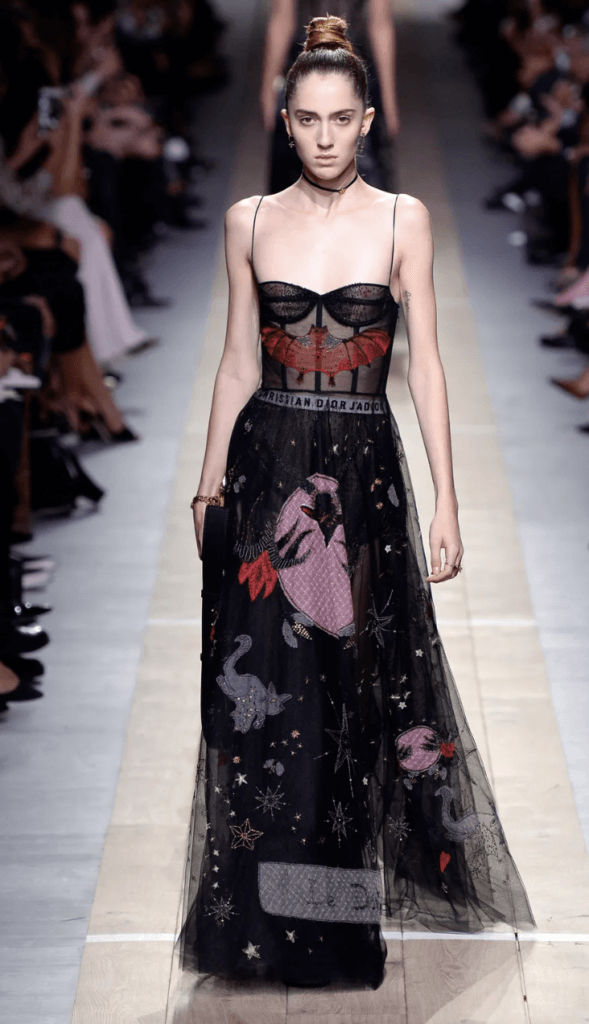
Gareth Pugh’s penchant for the macabre was on full display in his FW13 collection, where models floated down the catwalk like ghosts in floor-length ethereal gowns and whiter-than-white make-up, their faces veiled with strands of hair like cobwebs. His inspiration came from a Ukrainian women’s tribe known as ‘Asgarda’ – a group of around 150 women of varying ages who live in the Carpathian Mountains and seek complete autonomy from men.
For their SS17 collection, Preen designer duo Thea Bregazzi and Justin Thornton drew heavily on the history of their native Isle of Man, an island off the north coast of England known as a hotbed of witchcraft and occultism. Models were transformed into white witches, with flower petals strewn across their faces and down the catwalk, and their hair pulled into messy braids, giving the show a touch of Glastonbury chic. The pentagram motif was also woven into floral embroidery and stamped onto a white dress, and reappeared in the form of silver pentagram earrings and lapel pins.
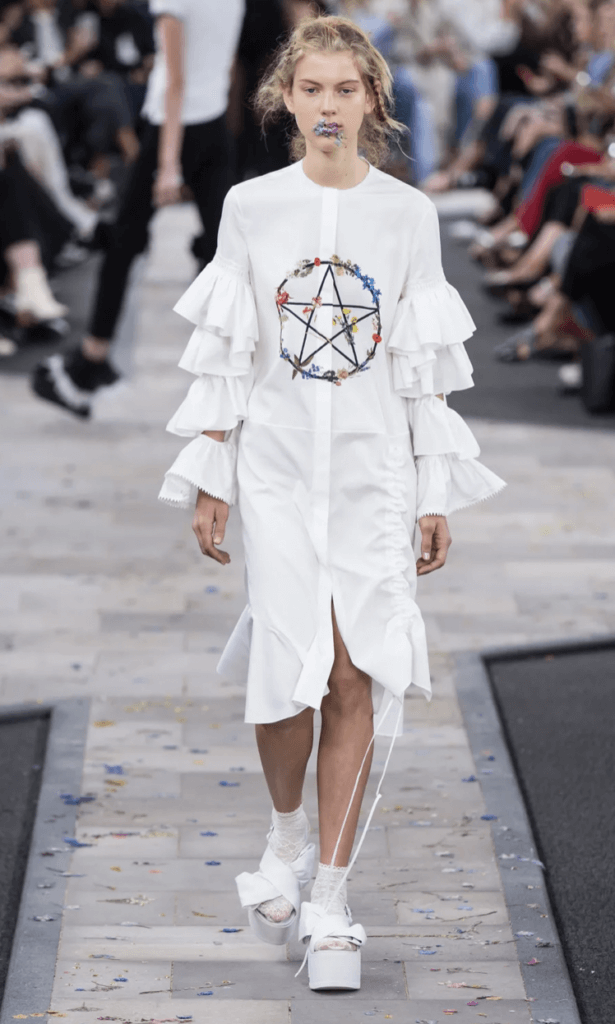
A self-confessed romantic, Ryan Lo’s SS19 collection had all the elements of a classic fairy tale: it opened with a model-turned-witch wearing an oversized red witch’s hat created by milliner extraordinaire Stephen Jones and holding a gilded broomstick, and closed with a princess in an ostrich-feather dress arm-in-arm with a knight in literal shining armour, ending on a hopeful, happily-ever-after note.
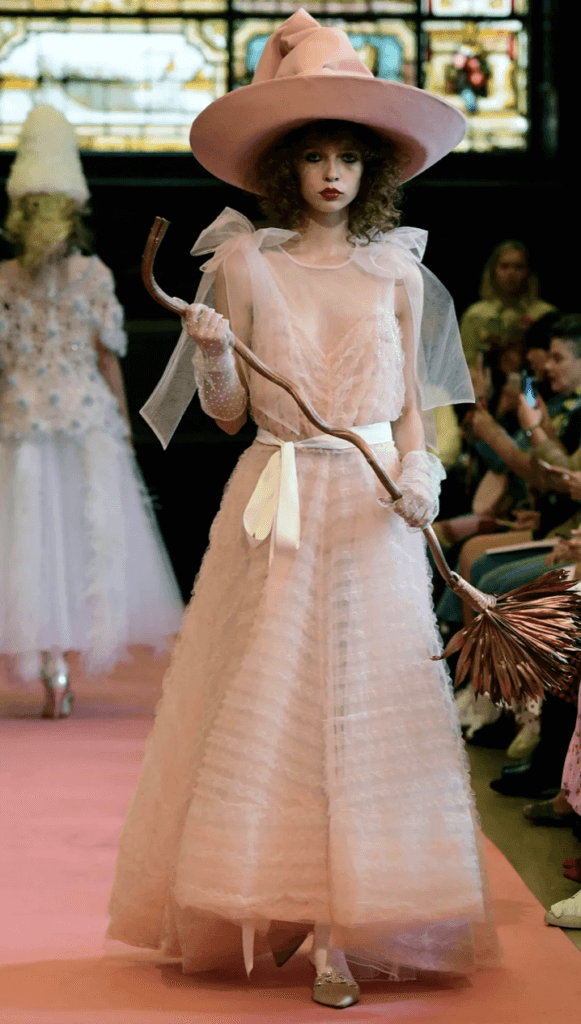
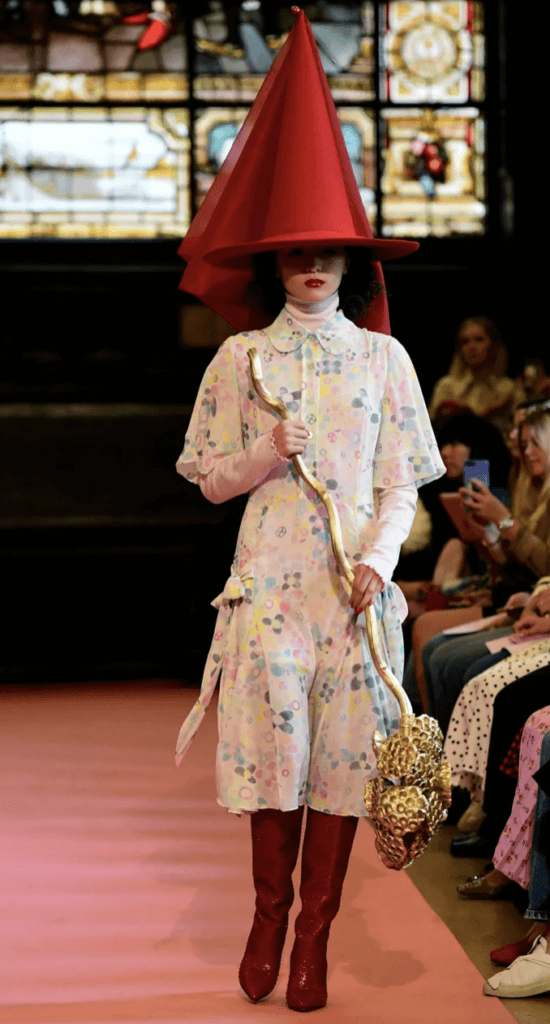
Not one to make clothes for wallflowers, Ashish on the other hand is best known for his love of sequins and slogans. For his SS18 collection, he conjured up a coven of disco witches – models wore bedazzled dresses, some dotted with glittering stars and pentagrams, others splashed with slogans such as ‘Witch’ and ‘Good Mourning’. The show was meant to be a reflection of the “dark times” we live in, but the glitter and disco balls symbolised his hope for the light ahead.
